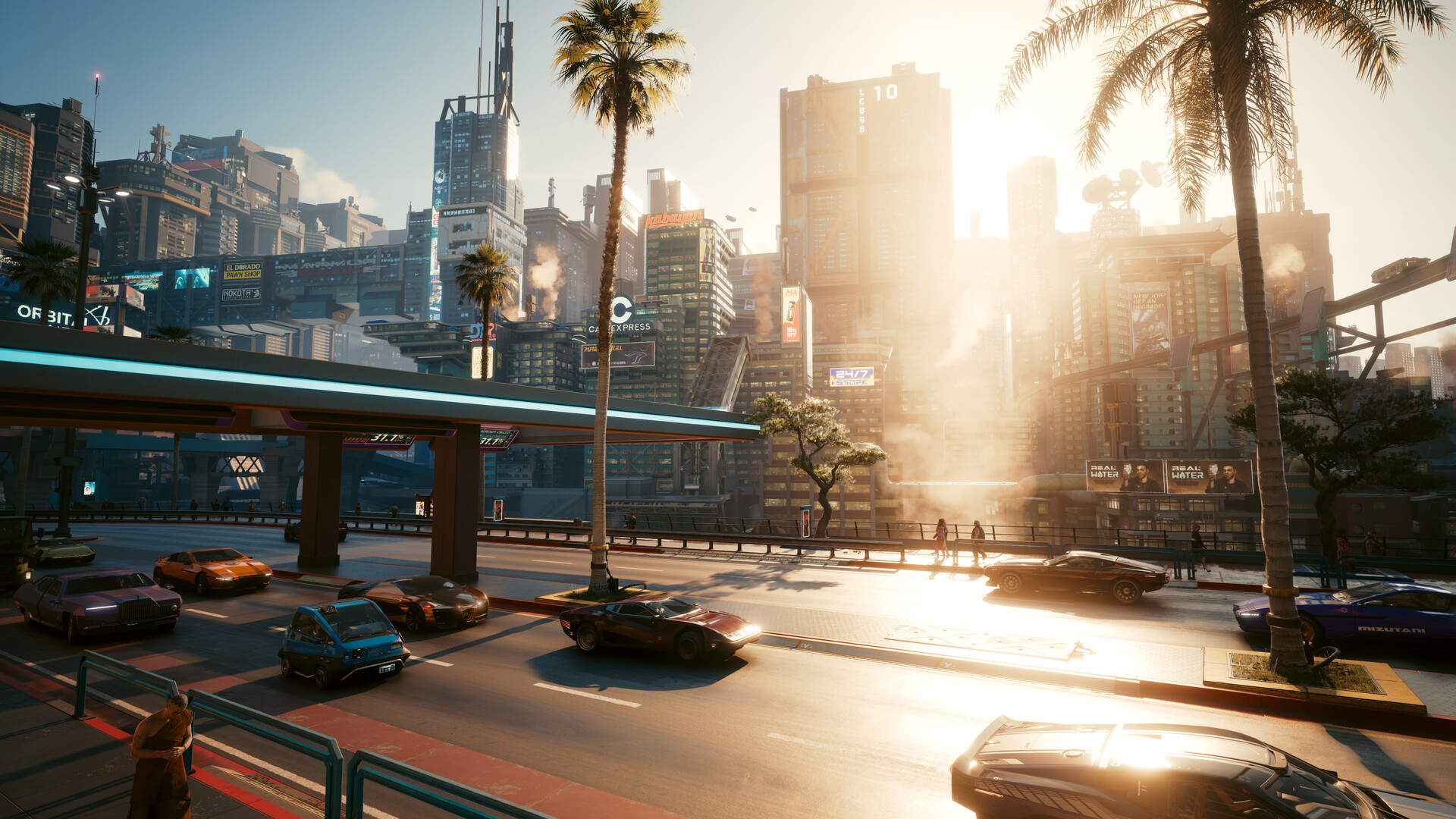Daddy’s Day Off is an ongoing streaming series where Patrick Klepek plays through the entirety of a game that he doesn’t have time for off the clock. Last year, he played through (the second half of) Elden Ring and Cyberpunk 2077. Starting in 2023, following each playthrough, he’ll file an essay about the experience. The next game hasn’t been picked. Any ideas?
You do a lot of things in CD Projekt RED’s Cyberpunk 2077, but far and away, my most common action was pulling up the map, looking for a fast travel point, then walking, running, or driving to said fast travel kiosk, pulling up the map again, and warping to a new location.
Videos by VICE
Every time it was, much like writing that sentence, exhausting.
A good open world is a character unto itself, and in fact, CD Projekt RED accomplished this with The Witcher 3! This is a monumental task to pull off, something that most games with expansive worlds only achieve in fits and starts. Big is not inherently better. And crucially, building a world that’s largely a dense city is different from the countryside of The Witcher 3.

Here’s what I wrote about Elden Ring, FromSoftware’s own foray into the era of Big Map, back when I worried that FromSoftware, too, might’ve been enraptured by scale alone:
“The term ‘open world’ has such grand implications. In the past, most video games were level-based, guiding players from one carefully constructed section to another. A combination of limited imagination and limited technology. Games like Metroid or Ultima were early flirtations with what we’d later dub open world. The technology part changed, and our game maps became big—laughably big—to the point that companies openly bragged about digital mileage. But rarely did imagination follow, to the point that “open world’ now frequently channels blurry visions of repetitive and mindless objectives copied and pasted across a vast, same-y landscape. We’ve swapped digital mileage for endless hour counts.”
Elden Ring’s world, the Lands Between, is a character, and you can feel its history leaking out all around you. The scale is enormous, to a laughable degree, but it also has presence. Nighty City also has a name, but rarely in my 40-plus hours spent exploring its nooks and crannies did it truly come alive. The best moments in Cyberpunk 2077, admittedly a game of some very high highs and very low lows even after dozens of patches, happened when I was face-to-face with someone telling me about how Night City had treated them.
The people of Night City—like the woman who stole my heart, Judy Alvarez—were the draw.
The point of my streaming series Daddy’s Day Off, cheekily titled because it’s an opportunity to play games at work that I cannot find time for outside of it, is patience. I’m not in a rush to finish because I’m not under the same time constraints—known as sleeping—on any given night. It’s less about being a completionist than it is about breaking my typical desire to seek efficiency, and yet time and time again, despite playing a game where part of the pitch involves a chance to fully explore a massively detailed city of the future, I chose not to.
(Would things have been different if the driving in Cyberpunk 2077 was enjoyable? Shhh.)
What became clear over time was that by force and with patience, I was turning Cyberpunk 2077 into a linear experience, an observation pointed out by someone watching the stream. I’d finish a mission on my checklist, and move onto the next. The open world, no doubt made with great pains and exploited labor over many years, was carved away. Rarely was enough gained by randomly poking around a nearby alley that I felt any motivation to spend time trying to find what wasn’t already highlighted on the map, and even then, much like the game’s indecipherable loot, it was often hard to figure out what was actually worth pursuing.
One advantage of a linear game is control. One advantage of an open world is more space, and in an open world like Cyberpunk 2077, where there are colliding systems like police and crowds, potential for stories to emerge from those systems bouncing off one another. But I cannot tell you a single time when an interesting story emerged from those systems beyond visual clutter or me having to outrun the police for 30 seconds because I accidentally bumped into a pedestrian, and the larger space rarely felt like an adventurous playground.
Cyberpunk 2077 is flawed enough that patches were never going to “fix” it. The combat felt same-y over time, for example, suggesting a deeper rot. Many of its problems are in the bones, and it’s overly simplistic to suggest Cyberpunk 2077 would have magically been a great game with its open world removed. But it’s definitely telling—and dispiriting, frankly, knowing how long it takes to build huge games like this—that I went out of my way to ignore Night City.
Next time, I hope I fall for Night City the same way I did for Judy. Let the city speak.
Follow Patrick on Twitter. His email is patrick.klepek@vice.com, and available privately on Signal (224-707-1561).
More
From VICE
-

Screenshot: YouTube/Xbox -

Screenshot: Bethesda Softworks -

Screenshot: GSC Game World -

Screenshot: Shaun Cichacki
